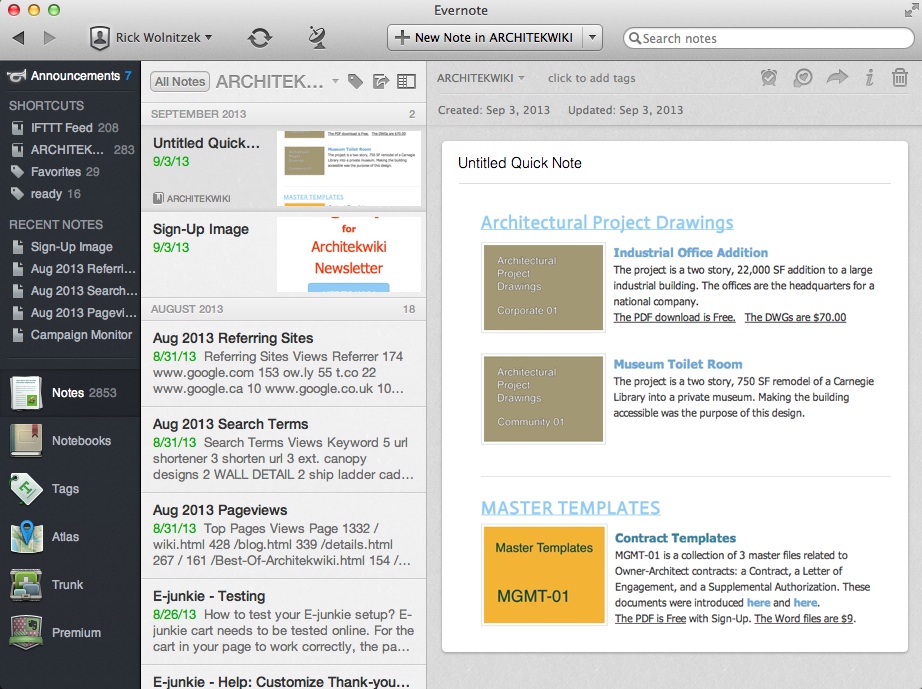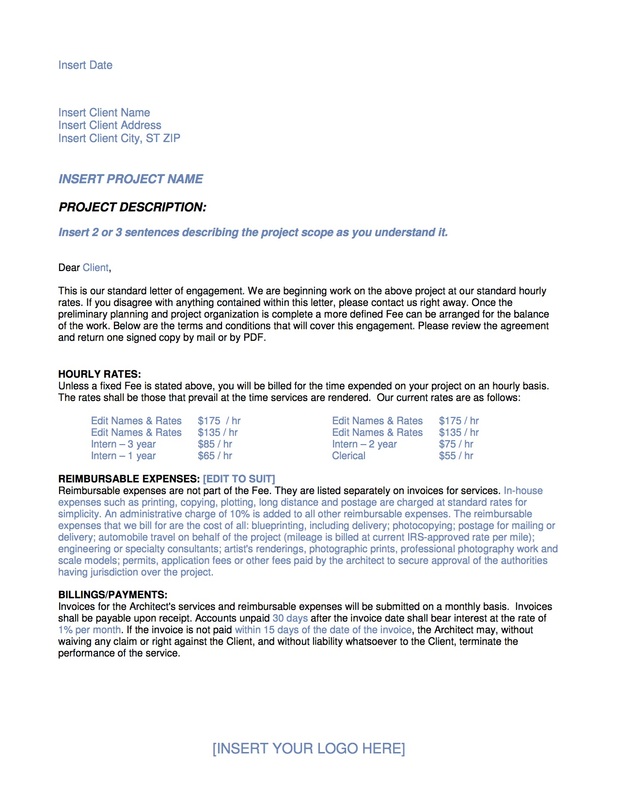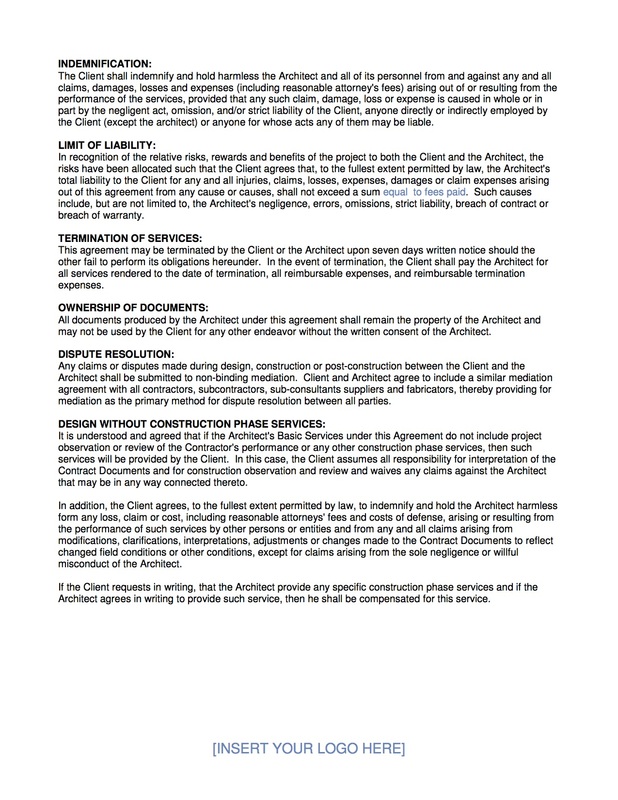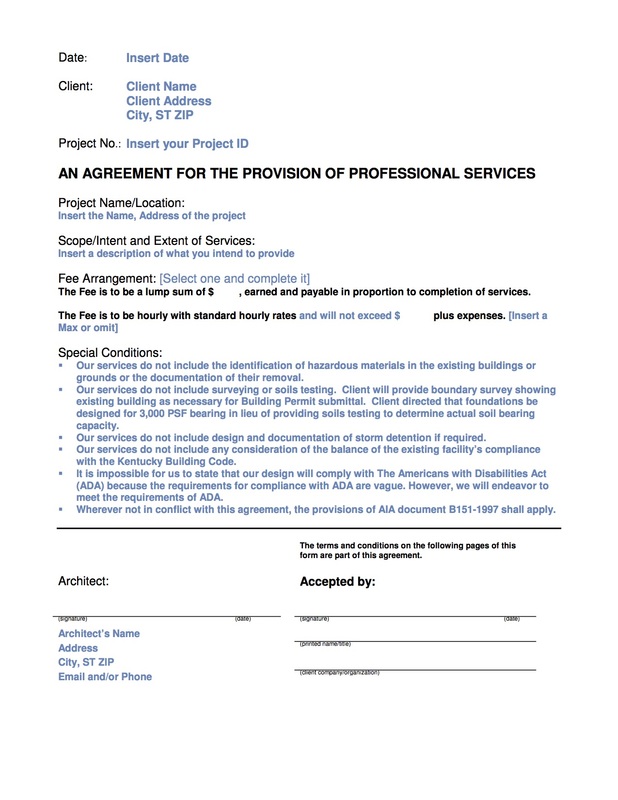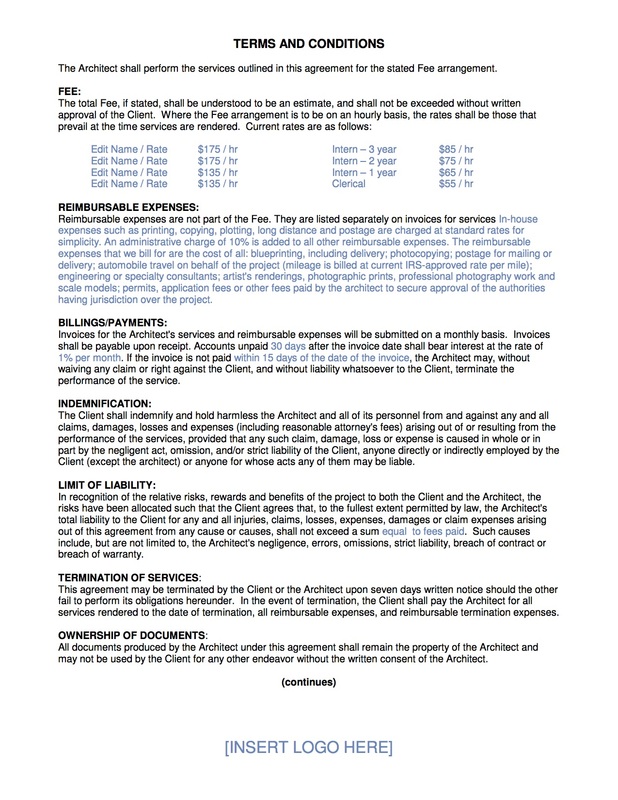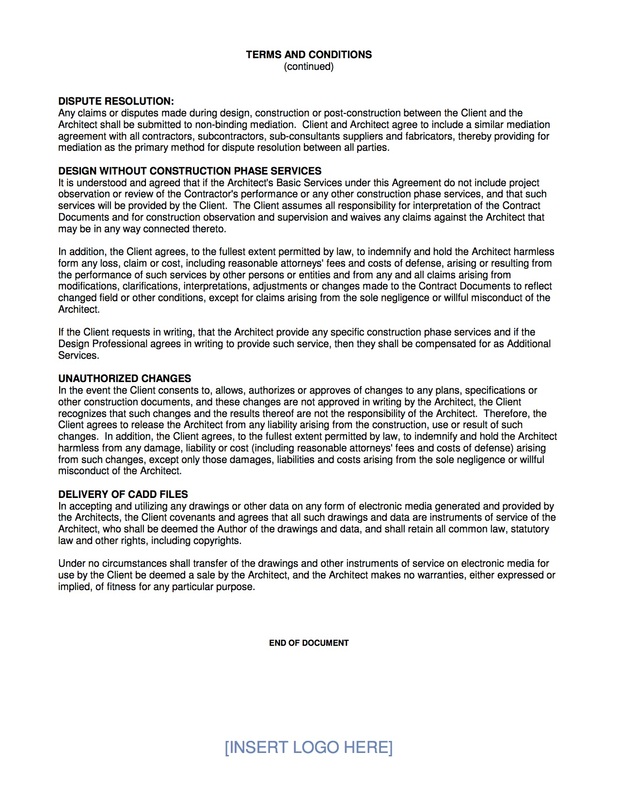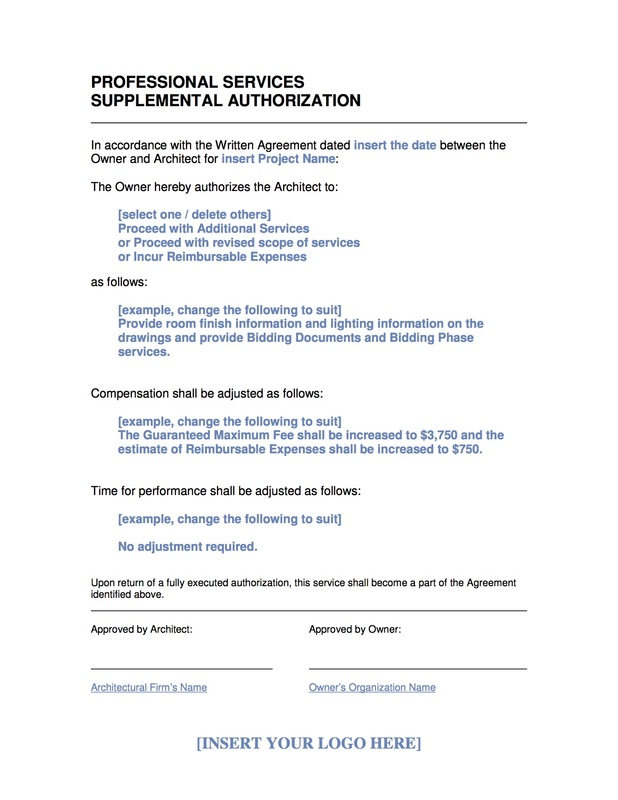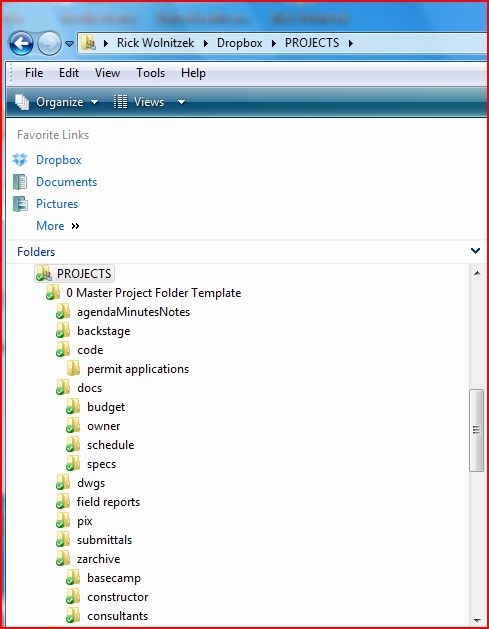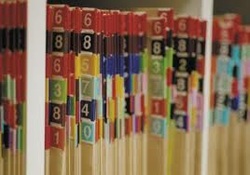 In Part 1 we looked at how you would integrate a 'Cloud' service into your workflow. In this 2nd Part, we look at how you might use Evernote and how a solution for you might look. For an individual, Evernote might be all you need to save your files. And Evernote is a great addition to any paperless filing system. You don't have to buy anything to store 60 MB per month. Evernote is browser based, but there are free apps that improve the experience on just about every platform. Evernote stores files as attachments to notes. You scroll thru your notes by Tags and Notebooks, or you can use Evernote's very strong search feature. The key to retrieving files is tagging them with meaningful words. A really useful feature is the ability to ’clip’ web pages and screen shots for storage. This makes Evernote a must-have research assistant for product, code, zoning and other kinds of research. The clipping tools are integrated into Chrome, Safari, Firefox browsers as extensions making the process very easy. The premium Evernote account is $5/mo ($45/yr) and the storage limit increases to 1GB per month and you are able to share Notebooks with other users who can add and edit information in the shared Notebook. Individual notes with attached files can be emailed to anyone. The biggest drawback to using Evernote as your main file storage location is that files have to be downloaded to edit them. Files like CAD or Word files start off being saved somewhere else, then moved to Evernote. Once modified, the file is attached to a new note or the same note, but it doesn't overwrite. This creates the opportunity to grab the wrong version for the next edit. I think it works better to think of Evernote as your file archive rather than a server. And it works much better than a server to collect and share research material. Your needs bear on the choices you make. I'll break it down into three scenarios - an individual, a small team of 2-7, and a firm or larger team of more than seven.
THE INDIVIDUAL SOLUTION The individual can almost certainly enjoy a cloud solution without spending anything for it. You probably already have several GBs of cloud storage as part of your Google account (Drive) or your use of Apple products (iCloud). If not, it is a snap to sign up for Dropbox to get started with 2GB free, and then use the Dropbox tools to urge your contacts to get an account, too (1/2GB per referral). Surely your SO, a couple of friends or family members will help you out. Bingo! You have 5GB of storage. Free. Next get an Evernote account if you haven't got one. Now move any inactive files from Dropbox to Evernote a few times a year to keep under your Dropbox limit. You have a sustainable free storage environment thanks to Evernote's total storage per account being unlimited. THE SMALL TEAM SOLUTION The Small Team, 2 to 7 people, Solution looks a lot like the Individual solution with the major difference that you may not be able to make it completely free. That is because of the need for sharing among team members. And to a lesser extent because the number of files will start to increase in number and total storage needed, you may bump into the limits of a free account. So here's what you do. Someone gets a paid Dropbox account for $10/mo ($100/yr). This raises your storage limit to 100 GB for that account, which you treat as the main account. Structure your folders so that projects don't overlap and other business functions are separate too - say finance, business development, management. Make the main dropbox folder 'shared'. Everyone else on the team can choose which folders of that large shared account they need on their free accounts to keep below the free limit. This may sound like a lot of trouble, but we have done it and it really isn't. Unless you are working with 20 MB picture files, but even 100s of BIM files easily fit in 2 GB. And how many BIM projects can you be actively working on at one time? Checking your shared folder selections a couple of times a year will save you $100 per person. Since you have 100 GB of storage for the team, there is no need to move inactive files to Evernote. However, the other reasons for using Evernote still apply. Once again, like Dropbox, make one account a premium account. This person starts all the Notebooks that will want to be shared with everyone else. Easy peasy. THE BIG TEAM SOLUTION The Big Team, more than 7 people, Solution looks just like the Small Team Solution except you are likely to need more paid accounts. There will be more people who need access to just about everything. That just isn't going to work with one premium account. (Although anyone can access all the shared folders through a browser! It just isn't something you want to do constantly because it is slower.) I once evaluated this approach for an organization of 120 people. They identified only 3 people who would need access to everything, and another 7 that would need access to more than 2 GB of files. Here is another article that will help you go paperless. 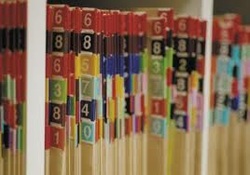 I recently extolled the virtues of going paperless for your record-keeping. What I didn't talk about was how you handle the backend of things, where do all these electronic files reside so that you can access them. The traditional way was to buy a server, set up a local network, connect all your computers to the network, and file everything on the server. To go offsite you, set up a virtual private network on your server that you could log into from anywhere there was Internet access. (This could get tricky.) $10,000 would get the job done, and it would last seven years with a $1,000 or more per year in maintenance and updates. Only large firms need or can afford this solution. Dropbox (or similar) is the new 'cloud' alternative to having your own file server. Dropbox is free for up to 2GB of storage and can be increased to 18 GB by getting friends to sign up too (500MB per referral). 2 GB might be enough storage for your work in progress unless your files include a lot of pictures and video. In any event you may be able to stay in the free arena indefinitely if you archive inactive files in Evernote. See the Evernote discussion in Part 2. You use Dropbox just the same as a file server. Once installed it shows up in your file folders, where you can set up sub folders as you like. Wherever you are, if you can get on the Internet even by 3G, you have access to your files. Smart phones and tablets work the same except access is through the Dropbox app. Or you can get access through a web browser on any computer. The first time that you access a drawing on a constructions site with your phone, you will catch yourself smiling. It is easy to share folders or files. Folders and sub-folders can be arranged the same way you are accustomed to. You can search your files, too, to find what you need, but I find a strong folder structure works best. Dropbox isn't the only choice. It is just the one I use and am most familiar with. Other Cloud services that work similar to Dropbox are Microsoft SkyDrive, Google Drive, Box, Apple iCloud or SugarSync. The list could go on. While technically your cloud data is safe and backed up, I have a 1 Tb hard drive security blanket that also holds everything that is on Dropbox. Your computer's hard drive might work just fine. Another piece of equipment that you might need to be paperless is an all-in-one printer/copier/scanner - forget fax. People are still going to send you paper, but you don't have to keep it. Scan it and file it away. You could use your phone's camera for this. But eventually you will tire of photographing multipage documents, getting the documents to lay flat, and illuminating them evenly and brightly. One last thing to consider, if filing all this digital stuff is a group activity, is an old-school paper attachment or coded directions for filing. This way you can indicate where you want something to go without being the person who does the scanning and filing. Or at least batch up the scanning/filing until you are in the mood. I found that a handwritten coded instruction works very well, often written on a post-it so the original remains pristine. "S/F-FAX/backstage" is an example. This 'says' to Scan and File the document in the Fine Arts Expansion project folder in the 'backstage' sub-folder. This code only works if you know the file folder scheme by heart. Otherwise you might need to paper clip a completed filing checklist to the document. In the next article, I will discuss how Evernote fits into the paperless process, and will give you some solutions for Individuals, Small Teams, and Big Teams. 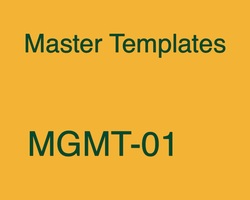 MGMT-01 is a collection of 3 master files related to Owner-Architect contracts: a Contract, a Letter of Engagement, and a Supplemental Authorization. These documents were introduced in the earlier posts linked above. Hopefully you will get some useful ideas about contracts themselves or the process that can make it easy to manage getting a written contract. The Letter of Engagement is a simple way to get an agreement as soon as you are asked to start work. It contains enough Terms and Conditions to lay a decent groundwork for your legal relationship with your client. Because it describes how you will get paid, it also is a good test to see if the client is for real. This Letter of Engagement is intended to be supplanted later with an AIA (or similar) contract; or with the Contract included here. The third template is a simple one-page authorization form that you can use when the inevitable change in scope occurs or when additional services of another kind come up. This form gets the cost ramifications on the table as simply as possible. 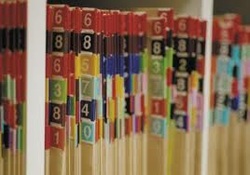 I have only seen three filing systems in my career. The first was Manila folders with Acco fasteners. The project name was put on a Pendaflex folder. A Manila file collected all the paper for each phase in chronological order. Three or four folders per Pendaflex hanging file. We rarely needed to retrieve anything from the file but it was a job best left to the secretary. The second was a binder system modeled after the system that I observed a Japanese client using. They retrieved items all the time with no bother at all. I adapted their system of binders to work for an architect’s needs. We quickly found that more than one binder would be needed per project - three normally. Design, Project, and Construction. We used a custom-designed set of tabs for each binder, the same every time. The Design Binder was used for all the design phases with code research, estimates, schedules, materials research and so on. As it filled up we started the Project Binder and moved contract-type documents with Owner and Consultants into it, added Bidding Phase documents. With the Construction Phase we started the third binder for Field Reports, Pay Requests, inspections, Test Reports (soil and concrete), Submittal Log, Punch List and Closeout Documentation. The project manager owned the binders, but didn't necessarily do the filing, so you knew where the binder for a project was located. You also knew where to find anything because the same tab system was used on every project. The third filing system is the one we use now. It is as paperless as we can make it. See description of the paper part. The electronic part of our filing system relies on the binder system for its organization scheme. The tabs have become sub-folders on the server, where every project’s records reside as original native format files like Word, Excel, MS Project, Dwg, etc. There are also many, many PDFs from all the paper documents that we scan or document attachments that have arrived by email. Here is what our Project Folder Template looks like. You may see ways of improving upon this, or see other folders that you would like to add. Here is what goes in each folder. Most labels are fairly obvious but others not as much.
The advantage of this system is that no special knowledge is needed to find any project-related file. Usually, you can do it in seconds. And you can email a copy while you are at it. Besides sorting by name or date, you can do a search for whatever you need. And, since we use Dropbox as our file server, you can access all of this data on your smart phone or tablet wherever you have cellular data, which is just about anywhere. I haven’t taken a briefcase, file folder or roll of drawings onto a job site since owning a tablet. Note 1.) All the projects underway are filed under PROJECTS. Every year or so we relocate closed projects to a 'zArchive' folder under PROJECTS. That way every project is handy, easy to find, but not cluttering up access to the work-in-progress. Note 2.) Our project-naming system is unlike any I have seen elsewhere. We use 3-4 letters to designate the client’s name, which is separated with a dash from another 3-4 letter ID representing the project name. The client name is abbreviated like a corporation’s stock ID, e.g. APPL for Apple, Inc. The project ID often stands for the initial letters of the actual project name, e.g. FAX for Fine Arts eXpansion. |
x
Archives
February 2024
Categories
All
|
Architekwiki | Architect's Resource | Greater Cincinnati
© 2012-2022 Architekwiki
© 2012-2022 Architekwiki
